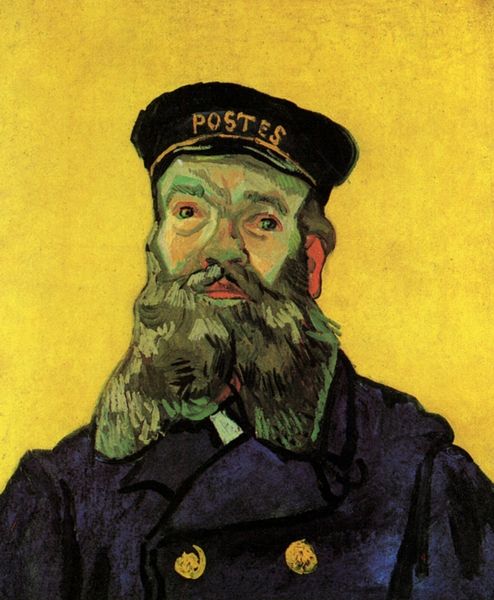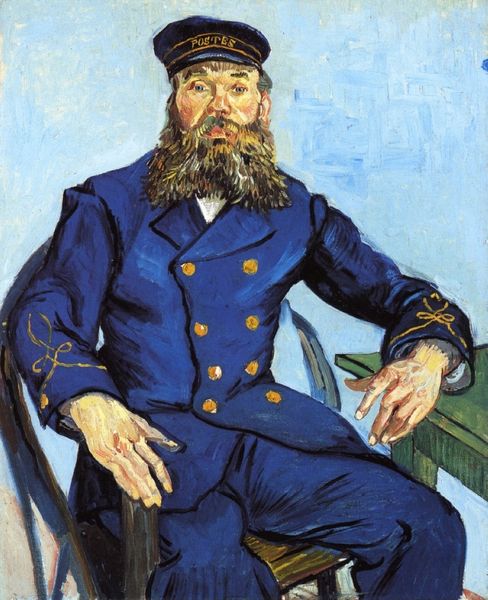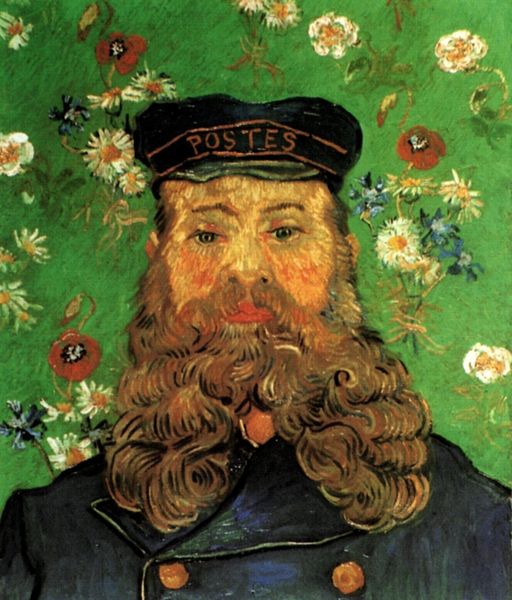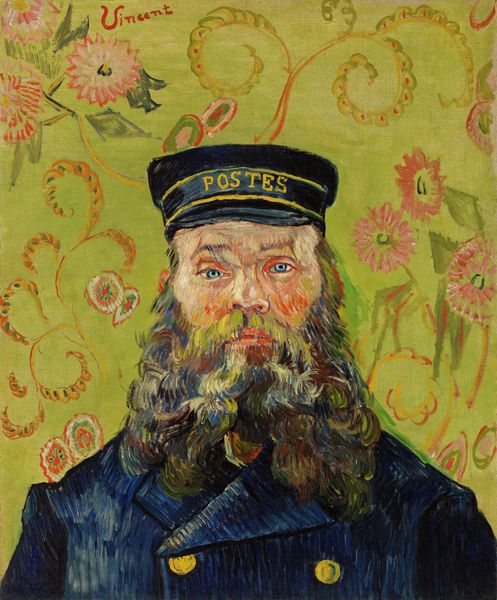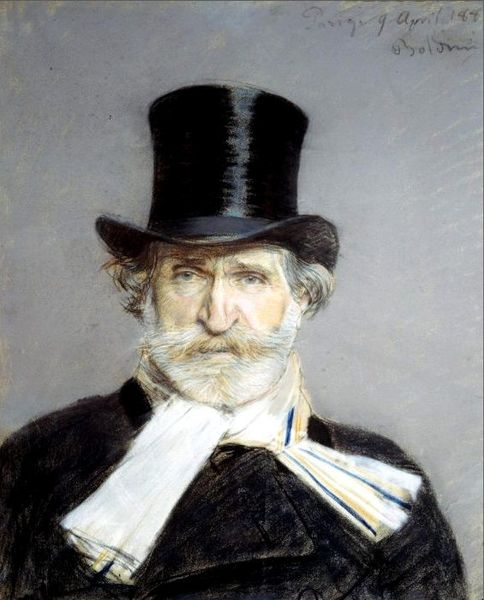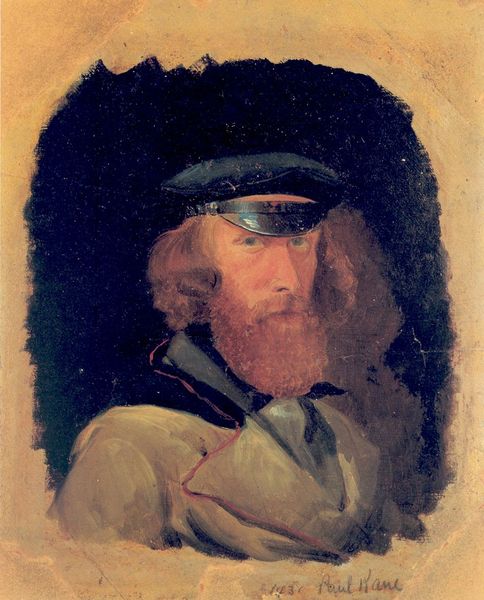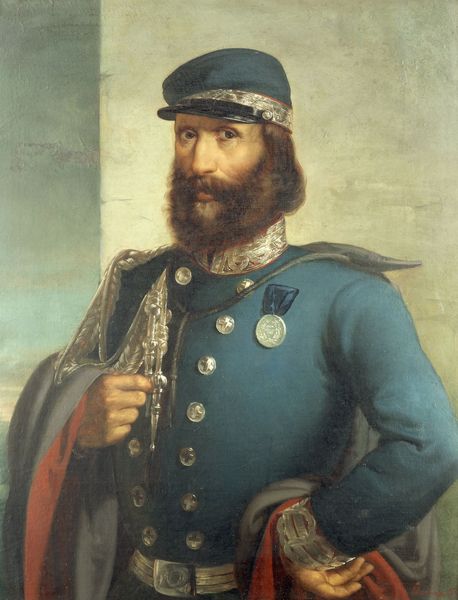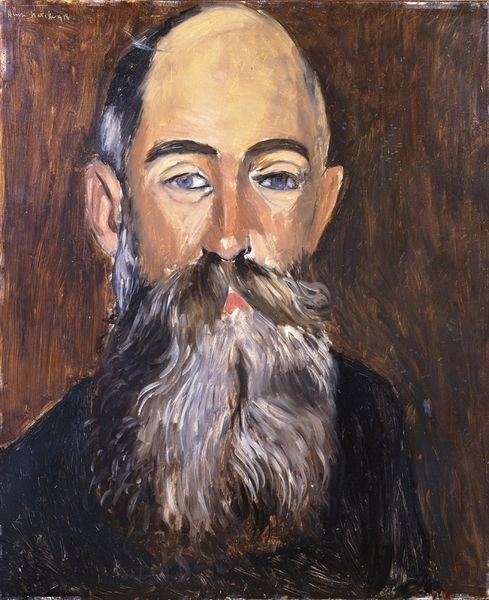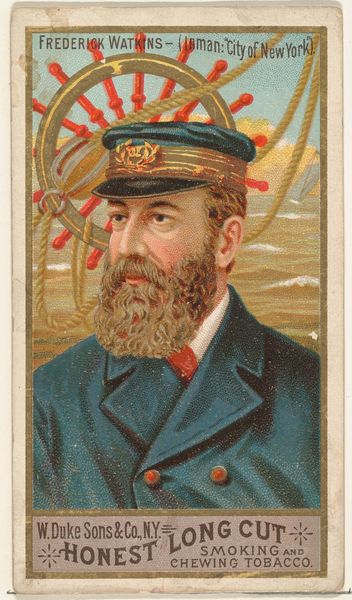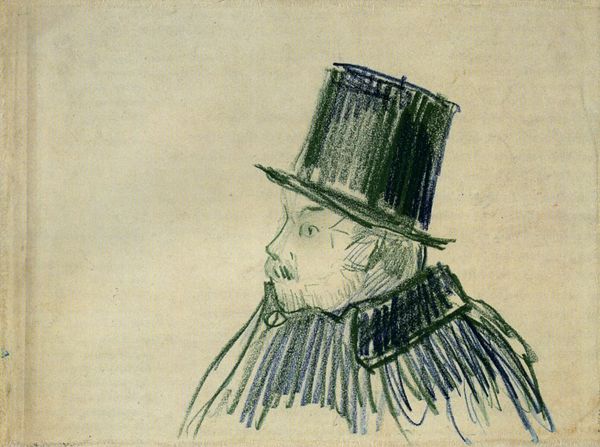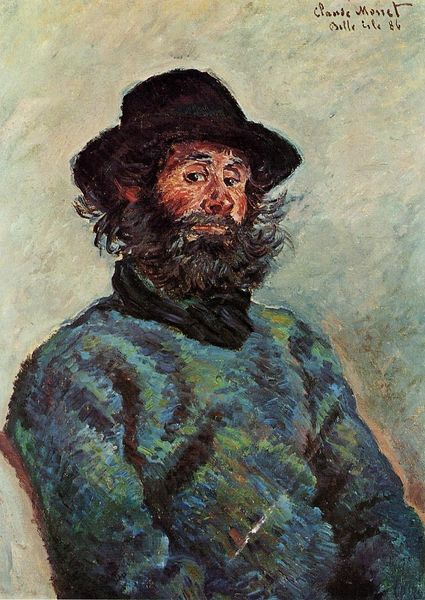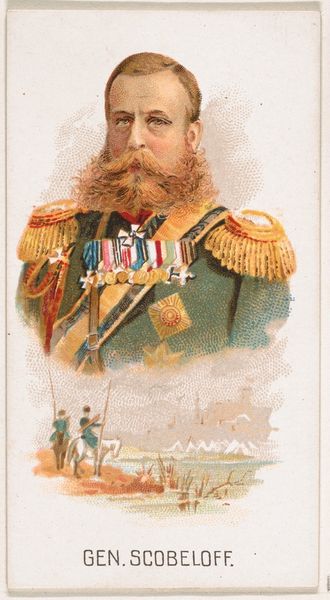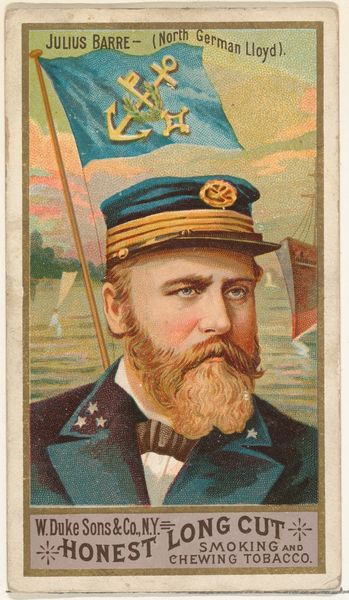
painting, oil-paint, impasto
#
portrait
#
painting
#
oil-paint
#
impasto
#
genre-painting
#
post-impressionism
#
modernism
Dimensions: 64.1 x 48 cm
Copyright: Public domain
Curator: Van Gogh’s “Portrait of Postman Roulin,” painted in 1888, is part of a series of portraits he created of his friend Joseph Roulin while in Arles. Editor: Immediately, I’m struck by the painting's materiality. The impasto technique creates such a tactile surface; the strokes seem almost three-dimensional. Curator: Indeed, and that speaks volumes about Van Gogh’s process, doesn't it? His use of thick, visible brushstrokes wasn't just stylistic—it was a deliberate choice that challenges traditional methods of production. Van Gogh elevates the manual act of painting itself. Roulin, too, as a worker becomes the very subject of high art. Editor: Precisely! Looking closely, you can decode much about its semiotics. The swirling lines evoke a restless energy. The juxtaposition of the postman’s calm face and that dynamism is extremely interesting. Curator: It is, especially when you consider the context: Van Gogh was fascinated by the idea of community and connection, and the postman embodies this. He was fascinated by workers. Consider the uniform: It's rendered with such attention that one might consider the power dynamic inherent in the creation and replication of work uniforms. Editor: Absolutely, the hat emblazoned with "Postes" grounds the subject in a specific social role. Also note how Van Gogh emphasizes the blues and yellows. How this contrast shapes our experience of viewing. What are your feelings about that? Curator: Considering that Van Gogh produced multiple versions of this portrait and portraits of the entire Roulin family tells us about his vision for the potential for community that ran contrary to a society predicated upon industrial extraction and profit. Editor: I agree. The enduring power of "Portrait of Postman Roulin" comes, I think, from Van Gogh's keen awareness of how form and material converge. Curator: And, importantly, the social and economic dynamics shaping artistic representation during the late 19th century. It makes me want to know more about Postman Roulin. Editor: Yes. The work beckons further observation into how we read emotion through visual form.
Comments
No comments
Be the first to comment and join the conversation on the ultimate creative platform.
